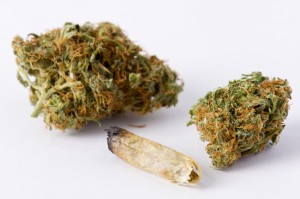 With all the changes in our country in the last few years, it can be hard to know what people really think about marijuana. After all, the voters in twenty states and the District of Columbia have legalized the use of this drug for medical purposes. I would imagine that parents are having a difficult time knowing what to say to their children. Preventing their children from abusing this drug must go far beyond a simple threat of “If I find you with marijuana, you’ll be grounded for months.”
With all the changes in our country in the last few years, it can be hard to know what people really think about marijuana. After all, the voters in twenty states and the District of Columbia have legalized the use of this drug for medical purposes. I would imagine that parents are having a difficult time knowing what to say to their children. Preventing their children from abusing this drug must go far beyond a simple threat of “If I find you with marijuana, you’ll be grounded for months.”
Surely, if a drug is approved for medical use in such a widespread fashion, it would be remarkably benign in use. But a report from the British Journal of Psychiatry notes that the undesirable mental effects of cannabis include:
• Panic
• Anxiety
• Depression
• Psychosis
• Paranoia
• Low motivation
These symptoms were found in people who smoked about two joints per day over a period of years. In a 1996 survey, 15% of marijuana users surveyed described psychotic symptoms like hearing voices or having unwarranted fears of being harmed by others.
And from the Substance Abuse and Mental Health Services Administration comes a report on the number of people arriving in emergency rooms as a result of problems with marijuana. In 2011, there were 1.2 million ER visits for problems that resulted from illicit drug abuse. The top drug overall was cocaine, followed by marijuana at 455,000 visits.
But when you separate out teens and young adults, the landscape changes dramatically. Among people aged 12 to 24, marijuana is by far the top drug sending people to the emergency room.
This statistic is measured as the number of emergency room visits per 100,000 population. So for every 100,000 people in this country, 240 teens (aged 12-17) went to the ER because smoking marijuana damaged them in some way they could not control. Among the age groups 18 to 20 and 21 to 24, the numbers were about the same: about 445 per 100,000 population.
Talking to Your Kids
Maybe this information will give parents something they can talk about. Maybe this kind of data will sink into young minds and help them see that there are risks whenever you step away from a drug-free path. No person who hands a young person a joint is going to explain the risks. A young person’s protection resides in his (or her) parents more than any other agency.
The job of Narconon is to help parents, relatives, teachers, club leaders and any other people concerned with the well-being of youth to make these risks clear. We are doing this job in Italy, Sweden, South Africa, Taiwan and dozens of other countries all year round. This is what inspires us every day.
http://bjp.rcpsych.org/content/178/2/116.full
http://www.samhsa.gov/data/2k13/DAWN127/sr127-DAWN-highlights.htm